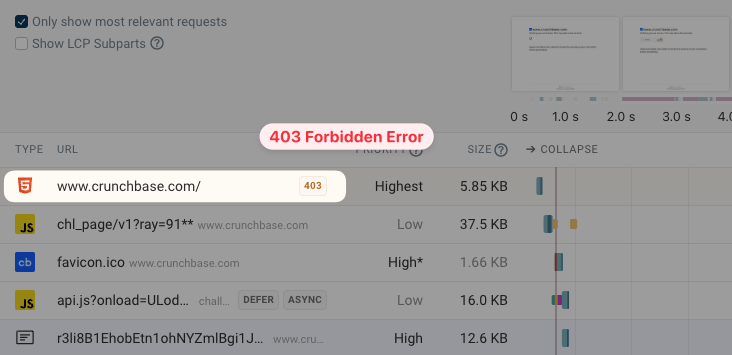403 errors in page test results
Sometimes your synthetic page speed tests may fail because the server returns a 403 error. Find out what's causing that and what you can do about it.
What are 403 Forbidden errors?
Website servers return the 403 HTTP status code when a browser requests a resource the user doesn't have access to.
That may be because the website requires login or because the visit is identified as a bot and blocked by the server.

You'll see an error message at the top of your test result if the page can't be tested.

How to fix 403 errors
Usually you need to change something in your server infrastructure so that it doesn't return a Forbidden status code.
Check your server logs to see why a 403 error was returned.
Allowlisting the DebugBear test agent
If your server is blocking DebugBear tests you need to identify those requests and allow them in your settings.
There are two ways to identify and allow DebugBear requests:
- By allowlisting a static IP address
- By allowlisting user agents containing
DebugBear
If allowlisting doesn't work
If you still get 403 errors after configuring your server to allow requests from DebugBear, it may be that there are other servers in your network infrastructure that are blocking the request.
Check with your infrastructure team and review server logs to identify what component returned the 403 error.
403 errors due to rate limiting
If you're testing many pages on your website at once, your server may return 403 errors due to rate limiting being applied.
In that case you can adjust your test schedules to better distribute performance tests throughout the day.